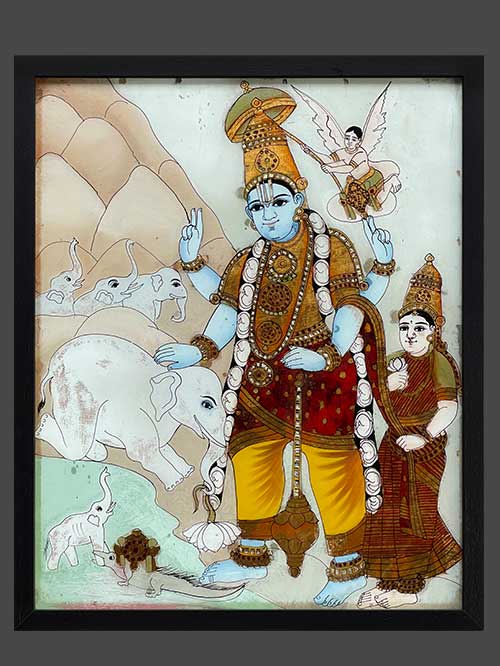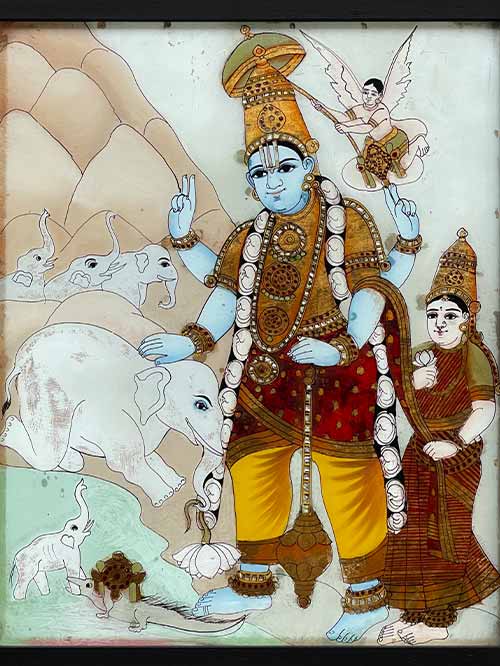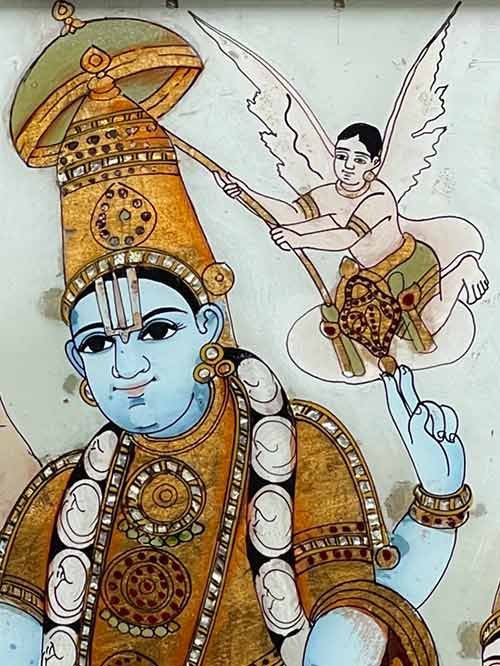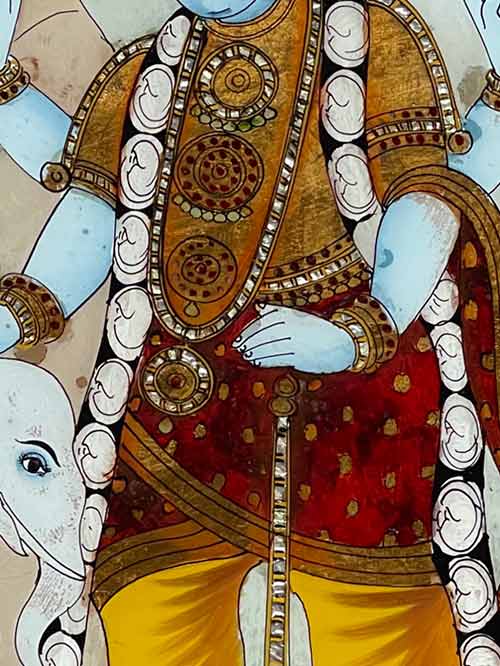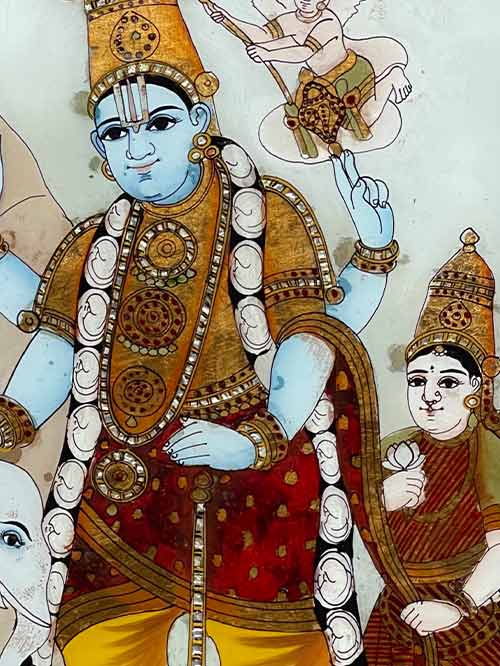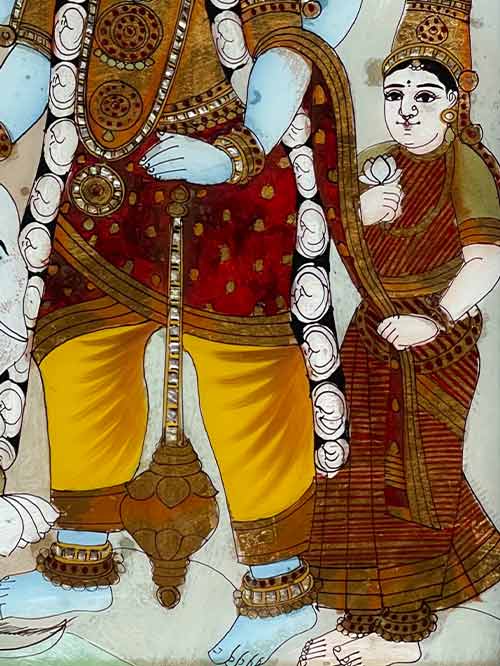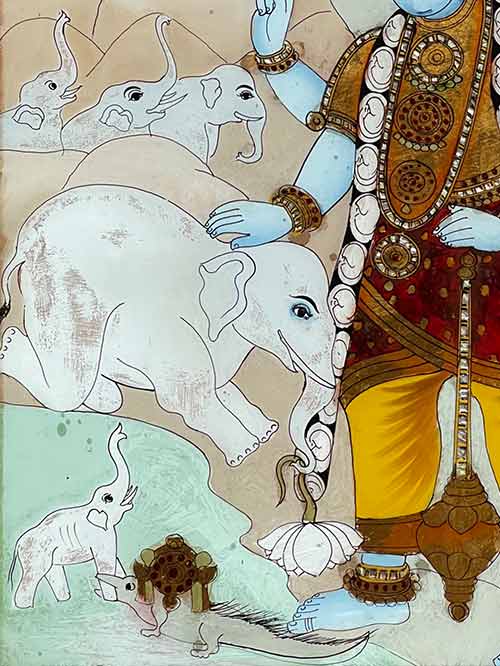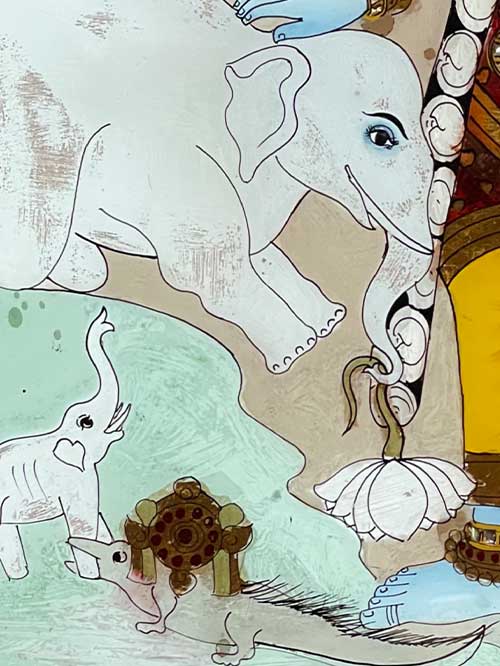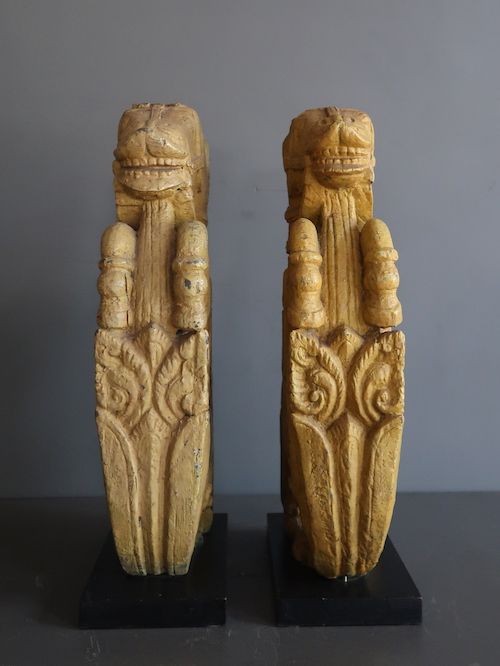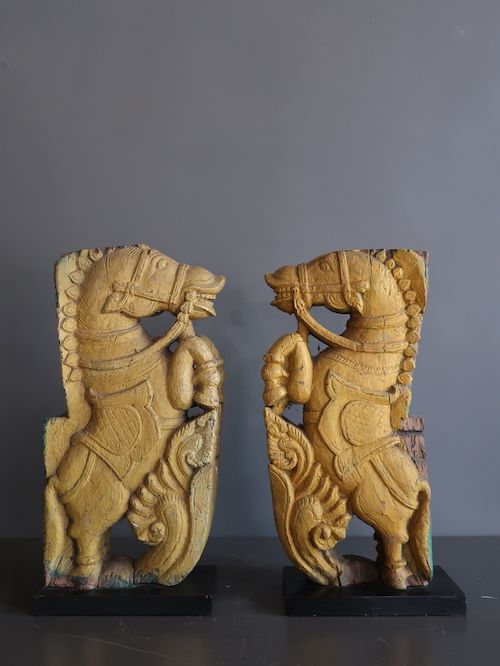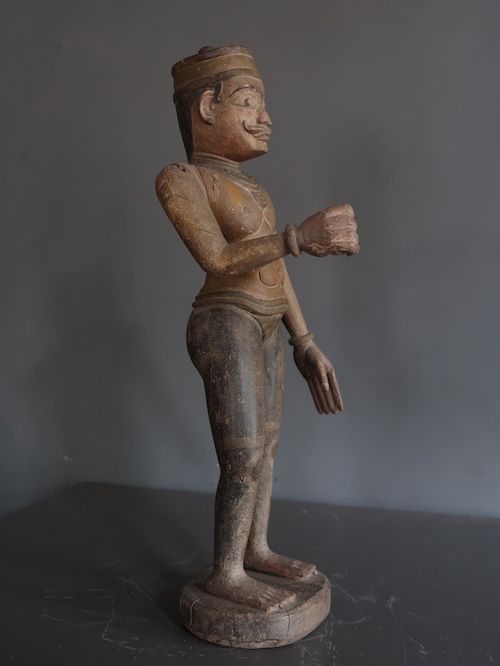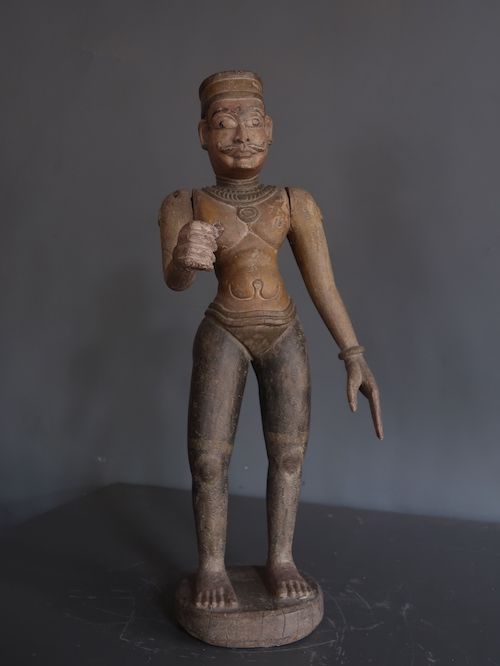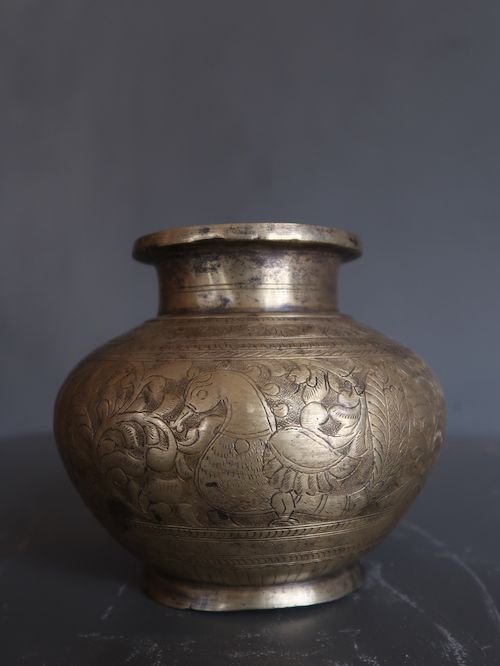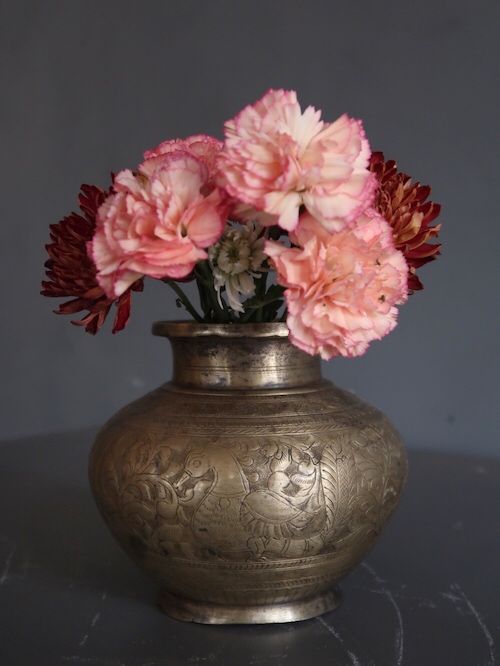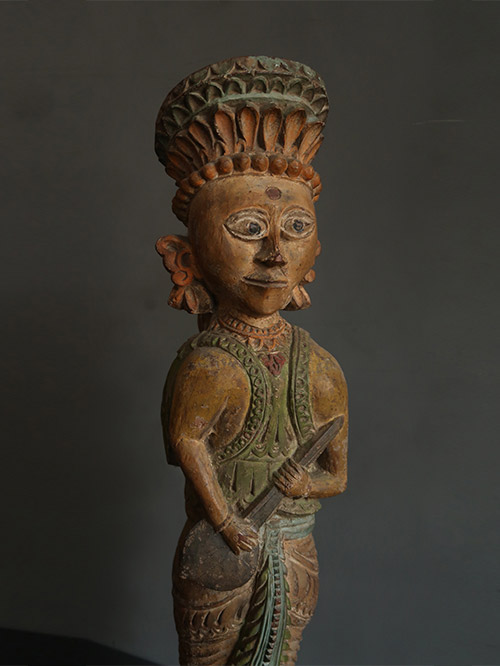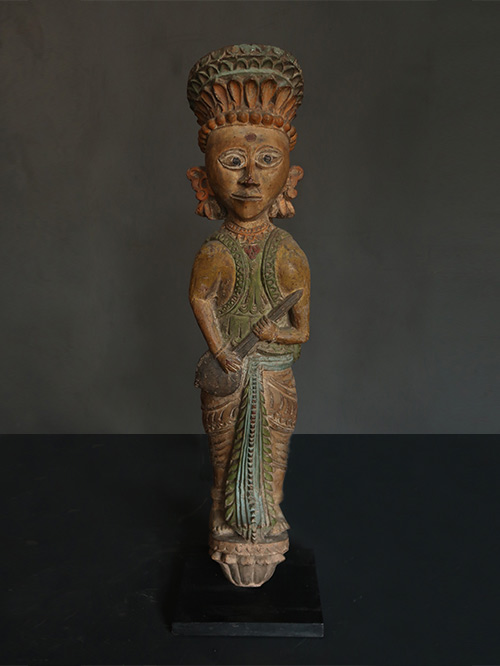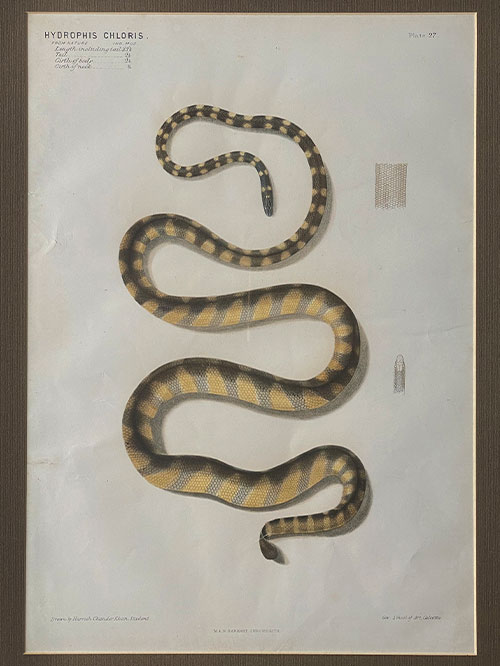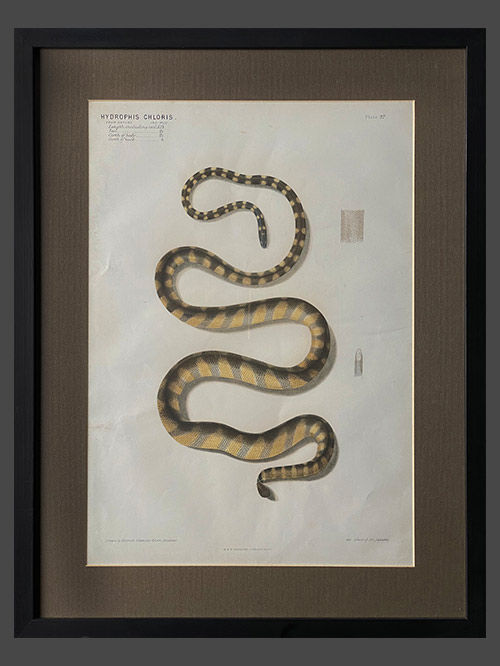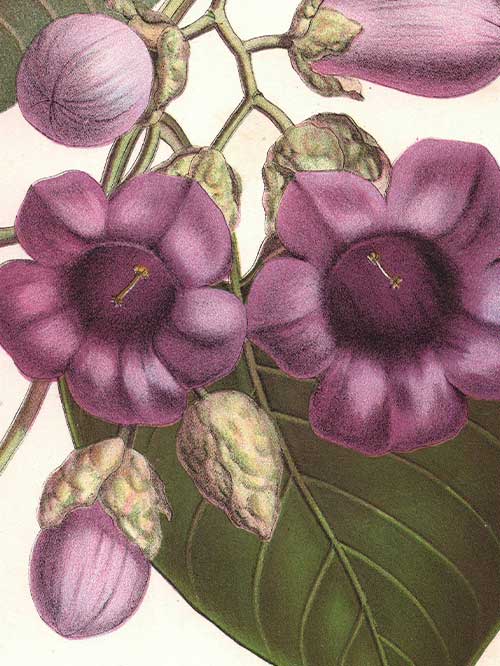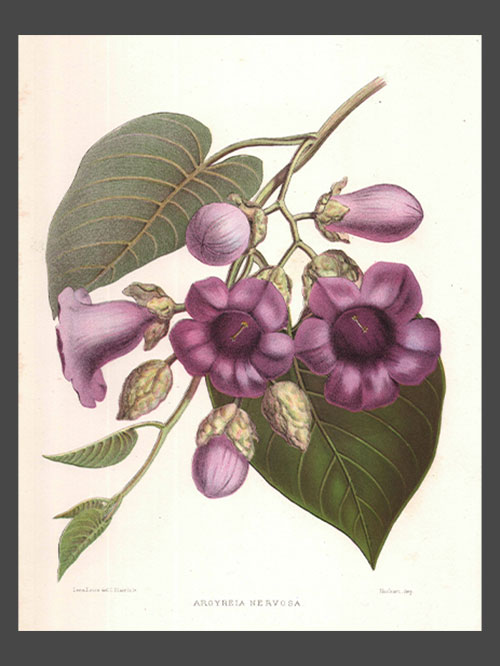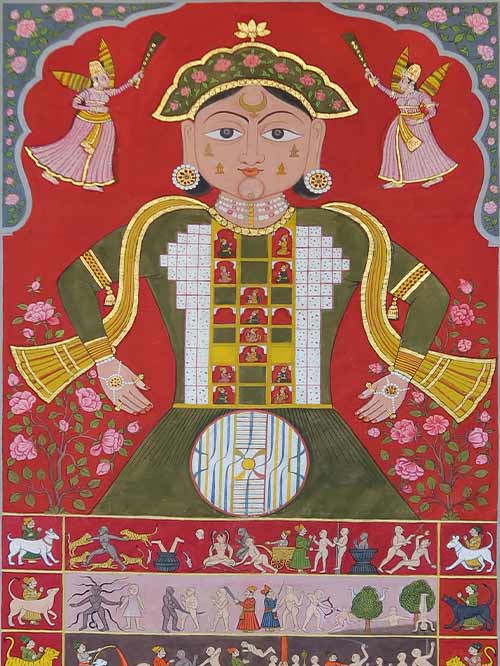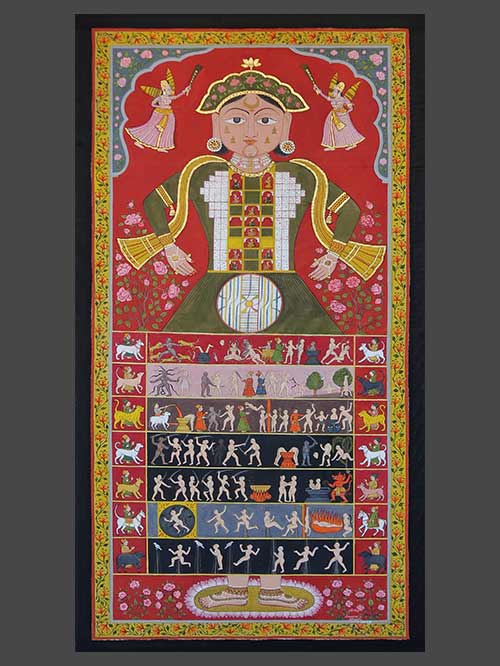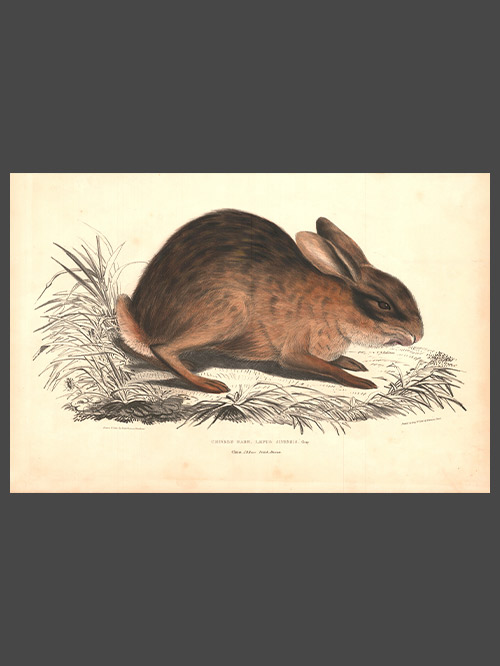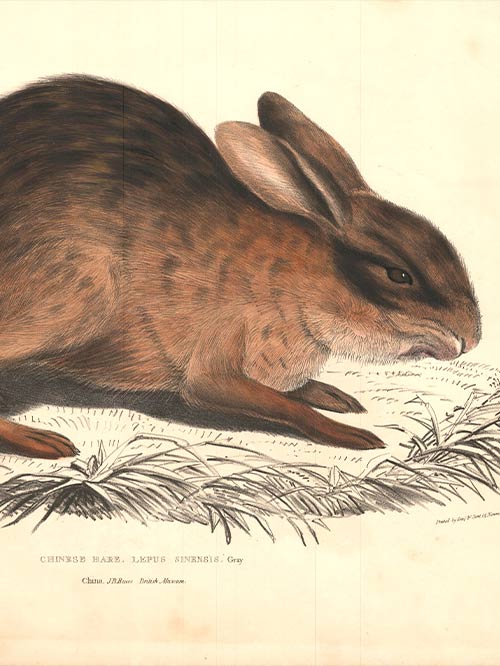Tanjore (South India)
reverse painting on glass
This painting is inspired by a famous narrative from the Bhagavata Purana. On the left, at the foot of a mountain, is a circular expanse of water in which the emaciated king of the elephants is on the verge of being drowned by a crocodile that has caught hold of its leg. Vishnu saves the elephant by decapitating the crocodile with his chakra, visible on the animal’s neck. The God is the central figure of the composition. His lower right hand rests on the head of the kneeling elephant. His upper right hand is devoid of attributes, suggesting however, that it was carrying the chakra. In his left hands are the shankha and the gada. Sri Devi, carrying a lotus, is at his side. In the sky, a gandharva floating on a cloud, holds a parasol above Vishnu.
Reverse glass paintings were introduced into India the late 18th century from China by way of the China Trade. Indian artists adopted the technique of reverse glass painting partly on account of its novelty and also because it was a relatively inexpensive medium which could produce rich effects. The technique proved extremely popular and soon spread through western and southern India and even to former provincial Mughal capitals of Oudh, Murshidabad.
In Tanjore – a small state with an old art tradition- a distinctive school of glass painting developed in the early 19th century and continued for more than a hundred years. The style was essential Indian – it tended to repeat patterns of regional painting: images of deities, portraits and themes form the ancient myths, secular themes such as portraits of kings or nobles, courtesans and musicians. The colour was rich and the style bold and defiant. The subjects were clearly presented with a certain opulence and glamour.
Painting Size (cms): 50(H) x 40(W)
Painting Size (inches): 19.75(H) x 15.75(W)
Framed Size (cms): 54(H) x 44(W) x 4(D)
Framed Size (inches): 21.5(H) x 17.5(W) x 1.5(D)

